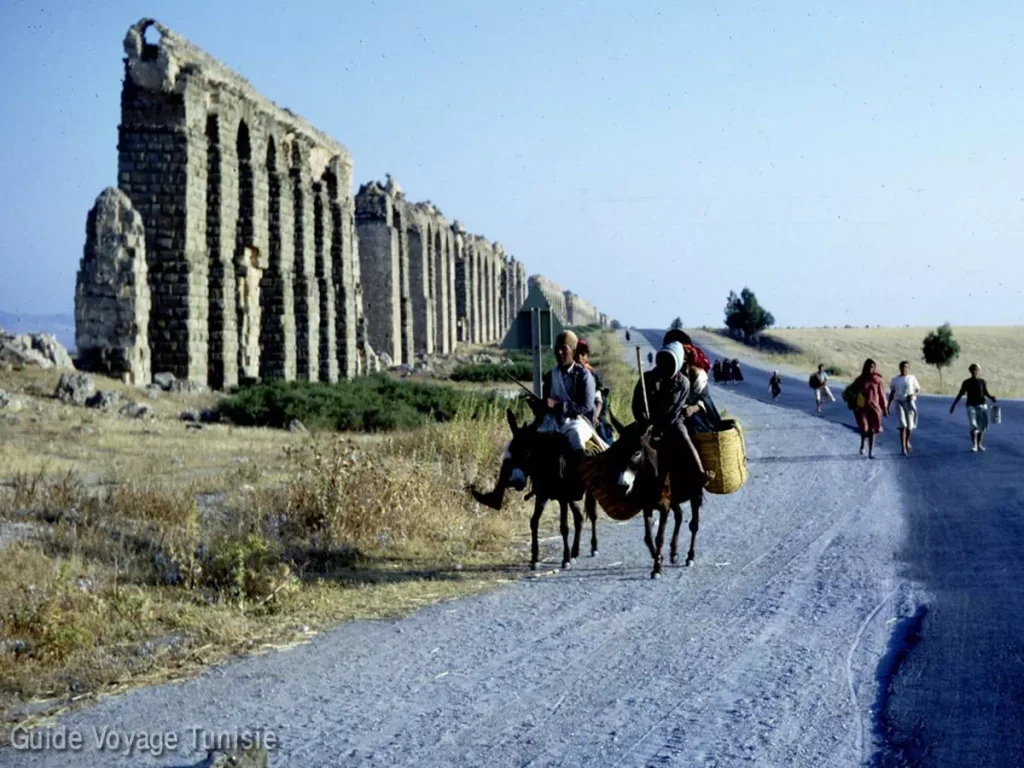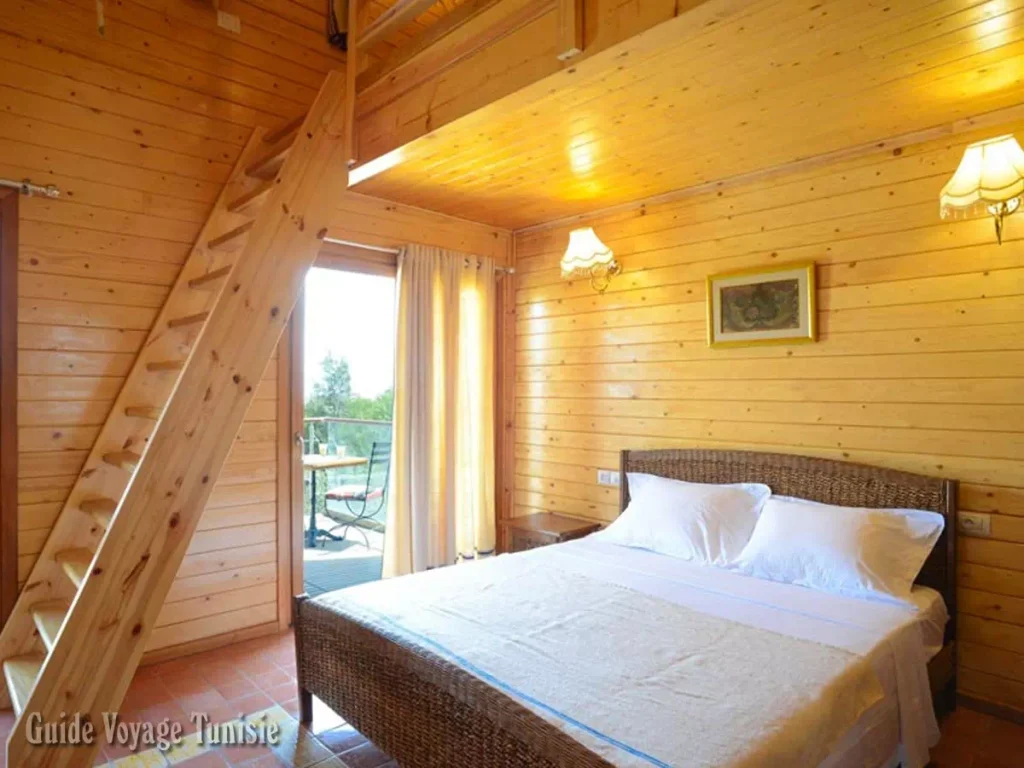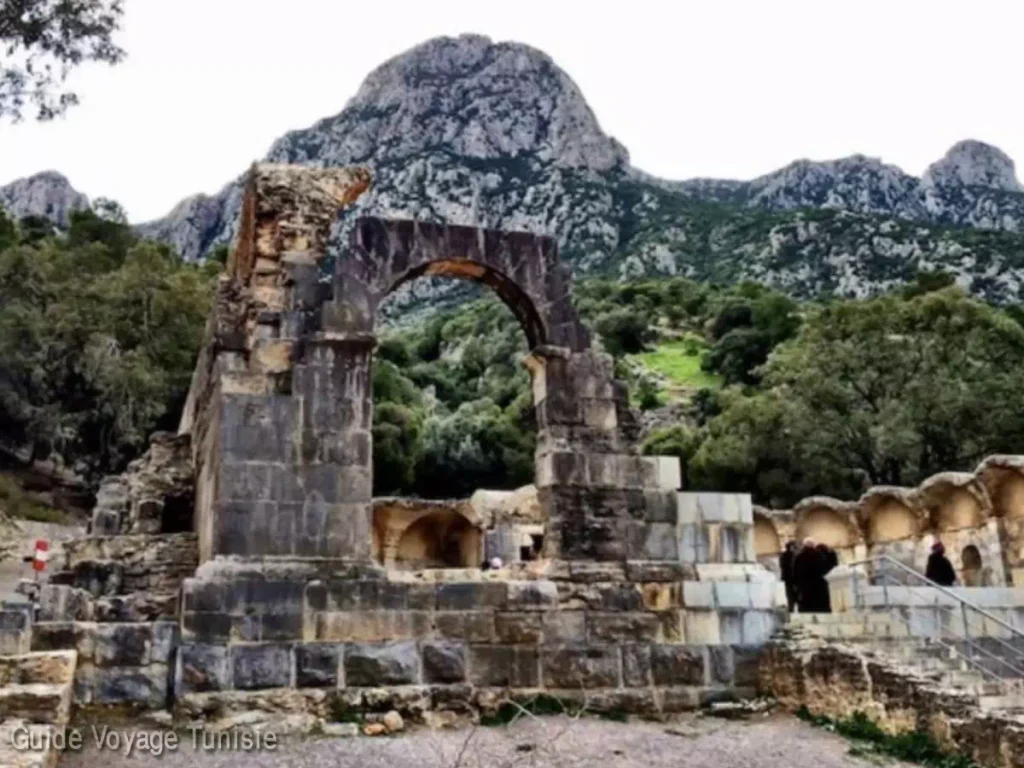The city of Zaghouan
the city of Zaghouan is located 50 km from the capital Tunis and 35 km from the seaside resort of Hammamet. It is one of the most captivating destinations in northern Tunisia. It boasts stunning views as it dominates a vast agricultural plain and is nestled on the slopes of Djebel Zaghouan. With a population of nearly 20,798 inhabitants as of 2014, Zaghouan is a town that offers a unique blend of history, natural beauty, and cultural heritage.
Exploring the City
Steeped in history, Zaghouan showcases remnants of its rich past. The town is dotted with charming narrow streets that wind through the ancient Ziqua site, where only a triumphal gate remains. As you meander through its small squares, you’ll catch glimpses of the surrounding plains. Zaghouan is renowned for its roses, particularly the botanical ancestor of the rose known as the rosehip, which has been cultivated since the 17th century by Andalusian Muslims expelled from Spain during the Reconquista.
A Haven of Springs and Hammams
Zaghouan is a magnet for tourists from the Arab world and locals alike, thanks to its abundant natural springs (“aïns”) and rejuvenating hammams. One of the most well-known hammams in the region is the Hammam of Zriba, located eight kilometers from Zaghouan. It offers an exceptional experience with its rose water, providing a soothing and aromatic treat for visitors.
Historical Significance
The history of Zaghouan is deeply intertwined with significant events and influences. In the 7th century, the city was conquered by the military leader Moussa Ibn Noussaîr during the emergence of Islam in the Maghreb. It was subsequently governed by the Aghlabids and the Fatimids before being invaded by the Spaniards. Throughout its history, Zaghouan served as a gateway for Christianity introduced by traders from the East who settled in the region. The presence of Christians in the area is evidenced by historical records dating back to the second century.
Traces of the Past
The remnants of Zaghouan’s storied past are still visible today. Hewn tombs, cemeteries, and rock formations in the shape of small chambers stand as enduring testaments to the Christian era. These monuments are found not only near the village of Sidi Medyen, nestled behind the mountain of Zaghouan (Djebel Zaghouan), but also in other places such as Sidi Zid and Ain Asker.
Roman Prosperity
While there is limited evidence of Zaghouan’s prosperity during the Carthaginian and Punic eras, the city flourished during the Roman period, particularly between the 2nd and 3rd centuries AD. It experienced significant growth and was recognized as a municipality, earning the name Ziqua, which likely derives from the word “aqua,” meaning water. Water played a vital role in the region’s wealth and resources.
The Water Temple
Today, the city of Zaghouan is believed to be built upon the remains of the ancient Roman city. Numerous sculptures and historical artifacts have been discovered, with some even offered to Boniface, the governor of Ifriqiya from 423 to 432 AD, in honor of his efforts in renovating and restoring the city. The most remarkable evidence of Zaghouan’s Roman history is the famous Water Temple, an imposing structure that proudly stands on the mountain’s summit, symbolizing the city’s historical significance.
Immerse Yourself in Zaghouan’s Rich Heritage
With its fascinating history, natural wonders, and cultural treasures, Zaghouan invites you to explore and immer.
The city of Zaghouan in pictures
The city of Zaghouan in video
Where to stay in Zaghouan
In Zaghouan, the choice of accommodation is so vast that it can meet all needs and all tastes! Between hotels, guest houses and vacation rentals you are spoiled for choice.
Top visits in Zaghouan ?
Zaghouan is the place where you won’t get bored! Between its various archaeological sites, the water temple and its aqueduct, we have enough to fill a week. Discover with us the essentials of Zaghouan.






